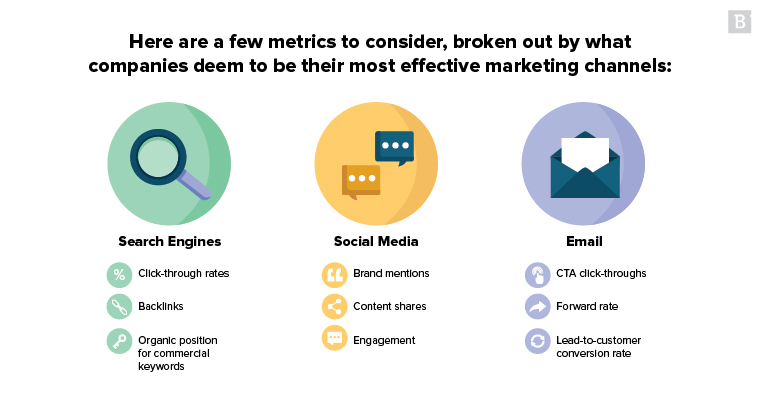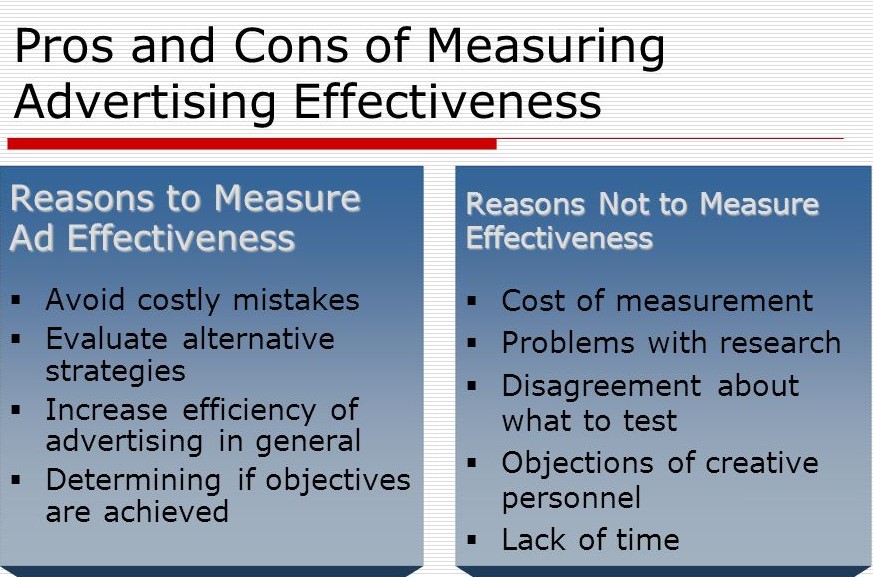
Are you constantly wondering how to accurately gauge the effectiveness of your advertising campaigns? Look no further – this article will provide you with valuable insights on how to measure the success of your advertising campaigns more effectively. By exploring key metrics, such as reach, engagement, conversions, and return on investment (ROI), you’ll gain a comprehensive understanding of how well your campaigns are performing and make informed decisions to optimize your advertising efforts. Say goodbye to guesswork and hello to data-driven success!

Setting Clear Objectives
Defining the goals of the advertising campaign
Before embarking on any advertising campaign, it is crucial to clearly define the goals and objectives. What do you hope to achieve through this campaign? Are you looking to increase brand awareness, drive sales, or encourage customer loyalty? By identifying specific and measurable goals, you can better evaluate the success of your advertising efforts.
Establishing measurable targets
Once you have identified the goals of your advertising campaign, the next step is to establish measurable targets. These targets will allow you to track your progress and determine whether you are on track to achieve your goals. For example, if your goal is to increase website traffic by 20%, you can set a target of reaching a specific number of monthly visitors. These measurable targets act as milestones that help you evaluate the effectiveness of your advertising campaign.
Selecting Key Metrics
Identifying relevant metrics for evaluation
To effectively measure the success of your advertising campaign, it is essential to identify the relevant metrics for evaluation. These metrics will vary depending on the specific goals of your campaign, but common ones include website traffic, conversion rates, and brand mentions. By focusing on these key metrics, you can gain valuable insights into the impact of your advertising efforts.
Choosing appropriate Key Performance Indicators (KPIs)
Once you have identified the relevant metrics, the next step is to choose appropriate Key Performance Indicators (KPIs). KPIs are specific metrics that directly reflect the success of your advertising campaign. For example, if your goal is to increase brand awareness, you might choose KPIs such as social media reach and impressions. By selecting the right KPIs, you can effectively track the performance of your advertising campaign.
Determining the baseline for comparison
To accurately measure the success of your advertising campaign, it is important to establish a baseline for comparison. This baseline represents the starting point from which you can measure any changes or improvements. By comparing your campaign’s performance against this baseline, you can determine the effectiveness of your advertising efforts and gauge whether you have achieved your goals.
Tracking Online Performance
Monitoring website traffic and engagement
One of the key metrics for evaluating the success of your advertising campaign is website traffic and engagement. By monitoring the number of visitors to your website and their level of engagement, such as time spent on site and pages viewed, you can assess the effectiveness of your advertising in driving traffic and capturing the interest of your target audience.
Analyzing click-through rates (CTR)
Click-through rates (CTR) are another important metric to track when measuring the success of your advertising campaign. CTR measures the percentage of people who click on your ad after seeing it. By analyzing CTR, you can determine whether your ads are compelling enough to capture the attention of your target audience and effectively drive them to take action.
Evaluating conversion rates
Conversion rates are a critical metric when evaluating the success of an advertising campaign. A conversion occurs when a user completes a desired action, such as making a purchase or filling out a form. By tracking conversion rates, you can assess how well your advertising efforts are converting leads into customers. This metric directly reflects the effectiveness of your campaign in driving desired outcomes.
Assessing bounce rates
Bounce rates represent the percentage of visitors who leave your website after viewing just one page. A high bounce rate can indicate that your advertising campaign is not effectively engaging visitors or meeting their expectations. By assessing bounce rates, you can identify areas for improvement and optimize your campaign to enhance user experience and reduce bounce rates.
Measuring time-on-site
Measuring the average time visitors spend on your website provides valuable insights into the level of engagement and interest generated by your advertising campaign. A longer time-on-site generally indicates that visitors find your content valuable and engaging. By tracking this metric, you can evaluate the success of your campaign in capturing and maintaining the attention of your target audience.
Analyzing Social Media Impact
Examining social media reach and impressions
When evaluating the success of your advertising campaign, it is important to examine the impact on social media. Social media reach and impressions indicate the number of unique users who have seen your content and how many times it has been displayed. By analyzing these metrics, you can assess the overall visibility and reach of your campaign.
Evaluating engagement metrics (likes, shares, comments)
Engagement metrics on social media, such as likes, shares, and comments, provide insights into how well your advertising campaign resonates with your audience. By evaluating these metrics, you can determine the level of audience engagement and the overall impact of your campaign. Strong engagement indicates that your content is compelling and successfully connecting with your target audience.
Tracking follower growth
Tracking follower growth on social media platforms is another important metric for measuring the success of your advertising campaign. By monitoring the increase in your followers, you can assess the effectiveness of your campaign in expanding your audience and growing your brand’s reach. A significant growth in followers indicates that your advertising efforts are resonating with your target audience and generating interest in your brand.
Monitoring sentiment analysis
Sentiment analysis involves tracking and analyzing the emotions, attitudes, and opinions expressed by your audience on social media platforms. By monitoring sentiment analysis, you can gauge how your advertising campaign is perceived and whether it is generating positive or negative sentiments. This feedback is invaluable in assessing the impact and effectiveness of your advertising efforts.

Assessing Brand Awareness
Conducting surveys and focus groups
To evaluate brand awareness, conducting surveys and focus groups can provide valuable insights. Surveys can measure the level of awareness and recognition of your brand among target consumers. Focus groups allow for in-depth discussions and feedback regarding the impact of your advertising campaign on brand awareness. By gathering feedback from your target audience, you can assess the success of your campaign in increasing brand awareness.
Monitoring brand mentions and sentiment on social media
Monitoring brand mentions and sentiment on social media provides real-time feedback on the impact of your advertising campaign on brand awareness. By tracking brand mentions and sentiment, you can gauge how your campaign is being perceived by your target audience and determine whether it is effectively increasing brand awareness.
Analyzing website traffic from brand-related searches
Analyzing website traffic from brand-related searches is another effective way to evaluate brand awareness. By tracking the number of visitors who arrive at your website through brand-related searches, you can assess the level of awareness and interest in your brand generated by your advertising campaign. Increased traffic from brand-related searches indicates a higher level of brand awareness.
Measuring brand recall and recognition
Measuring brand recall and recognition involves assessing the ability of consumers to remember and recognize your brand following your advertising campaign. This can be done through surveys and tests that measure brand recall or recognition. By evaluating brand recall and recognition, you can determine the success of your advertising efforts in establishing and reinforcing your brand in the minds of consumers.
Evaluating Sales and Revenue Generation
Tracking direct sales attributed to the advertising campaign
One of the ultimate measures of success for an advertising campaign is the direct impact on sales. By tracking the number of sales directly attributed to your campaign, you can evaluate its effectiveness in driving revenue generation. This metric provides tangible evidence of the campaign’s ability to convert leads into customers and drive business growth.
Analyzing revenue and profit growth
Analyzing revenue and profit growth is another way to evaluate the success of your advertising campaign in generating tangible results. By comparing revenue and profit growth during and after your campaign, you can assess the campaign’s impact on the financial performance of your business. Positive growth indicates a successful campaign that is generating tangible returns.
Assessing the return on investment (ROI)
The return on investment (ROI) is a critical metric for evaluating the success of an advertising campaign. It measures the profitability of your campaign by comparing the cost of the campaign to the resulting revenue generated. By assessing the ROI, you can determine whether your advertising efforts are delivering a positive return and whether further investment is justified.

Utilizing Customer Feedback
Conducting customer satisfaction surveys
Customer satisfaction surveys allow you to gather feedback directly from your customers regarding their satisfaction with your advertising campaign. These surveys can provide valuable insights into the effectiveness of your campaign in meeting customer expectations and generating positive experiences. By listening to your customers’ feedback, you can identify areas for improvement and optimize your advertising efforts.
Analyzing customer reviews and testimonials
Customer reviews and testimonials can offer valuable feedback on the impact of your advertising campaign on the customer experience. By analyzing these reviews and testimonials, you can gain insights into how your campaign is perceived by your customers and whether it is driving positive sentiment. Positive reviews and testimonials are indicators of a successful campaign that resonates with your target audience.
Comparing Against Competitors
Monitoring market share and brand performance
To evaluate the success of your advertising campaign, it is important to monitor your market share and brand performance in comparison to your competitors. By tracking market share and analyzing brand performance, such as customer loyalty and market perception, you can assess the effectiveness of your campaign in gaining a competitive edge.
Analyzing competitor analysis reports
Analyzing competitor analysis reports provides insights into how your advertising campaign compares to your competitors’ efforts. By studying these reports, you can identify industry trends, benchmarks, and best practices. This analysis allows you to evaluate the impact of your campaign in relation to your competitors and identify areas for improvement.
Conducting comparative advertising research
Conducting comparative advertising research involves directly comparing your advertising campaign to your competitors’ campaigns. This research can involve analyzing messaging, creative content, and tactics employed by your competitors. By conducting comparative advertising research, you can assess the effectiveness of your campaign in distinguishing your brand from competitors and capturing the attention of your target audience.

Applying A/B Testing
Creating control and test groups
A/B testing involves creating control and test groups to evaluate the impact of different variables in your advertising campaign. By splitting your audience into two groups and exposing each group to different versions of your campaign, you can compare the performance and effectiveness of each variation. This testing allows you to identify the most effective elements of your campaign and make data-driven decisions for optimization.
Analyzing performance differences
When conducting A/B testing, it is important to analyze the performance differences between your control and test groups. By comparing metrics such as click-through rates, conversion rates, and engagement levels, you can assess the impact of your campaign variations on desired outcomes. This analysis helps to identify which elements of your advertising campaign are driving better results.
Implementing changes based on results
Based on the results of your A/B testing, it is crucial to implement changes and optimizations to your advertising campaign. By leveraging the insights gained from testing, you can refine your campaign to focus on the elements that are most effective in achieving your goals. This iterative approach to optimization allows you to maximize the success of your advertising efforts.
Evaluating Long-Term Effects
Tracking customer loyalty and repeat business
To evaluate the long-term effects of your advertising campaign, it is important to track customer loyalty and repeat business. By monitoring customer retention rates, repeat purchases, and customer lifetime value, you can assess the impact of your campaign on long-term customer relationships. Positive trends in customer loyalty indicate the success of your campaign in building a strong customer base.
Assessing brand equity and reputation
Brand equity and reputation are critical indicators of the long-term success of your advertising campaign. By evaluating factors such as brand recognition, perceived quality, and brand associations, you can assess the impact of your campaign on the overall perception of your brand. A positive impact on brand equity and reputation indicates the success of your advertising efforts in building a strong and reputable brand image.
Analyzing long-term sales trends
Analyzing long-term sales trends is essential to evaluate the sustained impact of your advertising campaign. By comparing sales data over an extended period, you can assess the long-term growth and performance of your business. This analysis allows you to determine whether your campaign has had a lasting effect on revenue generation and business growth.
In conclusion, effectively measuring the success of advertising campaigns requires a comprehensive approach that encompasses a range of metrics and evaluation methods. By setting clear objectives, selecting key metrics, tracking online performance, analyzing social media impact, assessing brand awareness, evaluating sales and revenue generation, utilizing customer feedback, comparing against competitors, applying A/B testing, and evaluating long-term effects, you can gain valuable insights and make informed decisions to optimize the success of your advertising campaigns.






